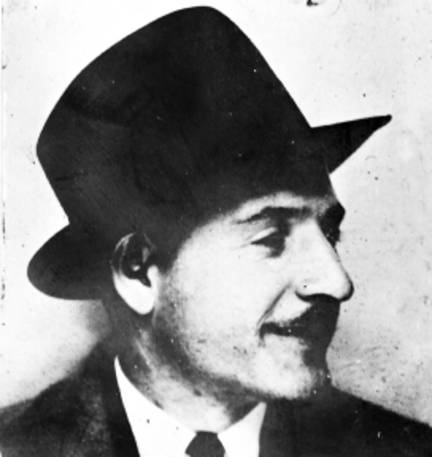Pietro “Pete” Panto (1911-1939), a longshoreman working the Brooklyn docks led a rank-and-file revolt against the corrupt and mob-controlled International Longshoremen’s Association. Headed by the all-powerful president Joseph Ryan (dubbed “King Joe” by dockworkers) and vice-president Emil Camarda, the ILA was rife with corruption, political patronage, and violence. Working conditions on the Brooklyn docks were horrid, with endemic problems such as the “shape-up” hiring system (where men waited daily to be chosen to work), mandatory salary kick backs, extortion, and high rates of work-related injuries. Enforcing the status qua of this corrupt fiefdom, was gangster Albert Anastasia, head of the crime syndicate “Murder, Inc.” and his brother Anthony “Tough Tony.”
According to historian William Mello, “a group of radical dockworkers with political ties to the American Labor Party and to the Communist Party formed the Brooklyn Rank-and-File Committee . . . to transform working conditions on the Brooklyn docks.” Their office was located at 186 Remsen Street in Brooklyn. Panto, who was at the center of the Committee’s work, “began to organize rank-and-file open air meetings in front of the piers.” The first one in mid-June 1939 brought together 350 longshoremen, while 1,500 assembled on July 3rd.
Union officials became worried. They tried smearing Panto as a “red.” They tried bribing him. And then they threaten him.
On July 14, 1939, Panto left his apartment at 11 North Elliot Place at 7PM “to meet two guys he didn’t trust,” telling his fiancée’s brother Michael Maffia that if he did not return by 10 the next morning he should call the police. Mello describes what happens:
Later testimony by Abe Reles, member of Murder Inc., to the Brooklyn District Attorney described the way Panto was taken to the house of waterfront gangster Jim Ferraco. There Albert “The Enforcer” Anastasia and Mendy Weiss met him. On Albert’s orders, Mendy Weiss assassinated Panto later dumping his body in a lime pit in Lyndhurst, New Jersey.
Trade unionists and political progressives such as author Richard Wright, House Representative Vito Marcantonio, Transport Workers Union president Michael Quill, among others, joined forces to “mobilize public opinion in order to compel the police and local government to find those responsible for Panto’s disappearance.” The Brooklyn Rank-and-File Committee posed the question “Dov’è Panto?” on pier walls and in pamphlets.
It wasn’t until January 1941 that Panto’s decayed corpse was discovered. No one was convicted of his murder.
Around this time, “progressive Italian longshoremen in Brooklyn organized “Il Circolo Educativo Pete Panto” (Pete Panto Educational Circle). It was a means of keeping the memory of Pete Panto’s activity alive and organizing dockworkers.”
Today the question is not, Where is Panto?, but, Who is Panto? Little is know of his life and struggle. There have been at least two fictionalized accounts of his labor activism and death, e.g., Robert Travers’s A Funeral for Sabella (1952) and Benjamin Appel’s The Raw Edge (1958). Panto’s story is often a mere backdrop to the recounting of Cold War’s politics and culture surrounding Arthur Miller’s screenplay The Hook, Elia Kazan’s film All Along the Waterfront, and their troubled relationship. I have relied on and quoted from Mello’s 2002 article “The Legacy of Pete Panto and the Brooklyn Rank-and File Committee” in The Italian American Review.
In keeping with the goals of Il Circolo Educativo Pete Panto, I organized the 2001 symposium “Italians on the New York Waterfront: A Tribute to Peter Panto” for the Calandra Institute, and now present here excerpts from the symposium as originally aired on ITALICS. (Grazie a Lucia Grillo.)


